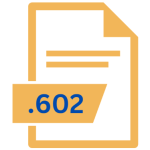.JP1 File Extension

Japanese (Romaji) Text File
| Developer | N/A |
| Popularity | |
| Category | Text Files |
| Format | .JP1 |
| Cross Platform | Update Soon |
What is an JP1 file?
The .JP1 file extension is primarily associated with a specific software or system, and it typically represents a file that contains configuration or job scheduling information.
These files are used to store critical data that helps manage various aspects of a system or software application.
More Information.
The history of .JP1 files are intertwined with the evolution of IT infrastructure management. The initial purpose of these files was to enable IT administrators to configure and manage various tasks, such as job scheduling, in a more efficient and organized manner.
.JP1 files served as the repository for configuration settings, ensuring that tasks and processes were executed according to specific parameters.
Origin Of This File.
The origin of the .JP1 file extension can be traced back to a software suite developed by Hitachi, Ltd. known as “JP1” or “Job Management Partner 1.”
This suite is designed to provide comprehensive IT infrastructure management solutions, including job scheduling, system monitoring, and resource optimization. The .JP1 file extension is intimately tied to the configuration files used within the JP1 suite.
File Structure Technical Specification.
Understanding the technical aspects of .JP1 files are essential for those who work with them. These files are typically stored in a binary format, which means they contain data in a format that is not easily readable by humans.
The specific structure of a .JP1 file can vary depending on its purpose and the software or system it is associated with.
However, it’s important to note that .JP1 files are not meant to be manually edited or modified. They are primarily generated and managed by the JP1 software suite itself. Attempting to edit a .JP1 file without proper knowledge can result in system errors and data corruption.
How to Convert the File?
Before you can open .JP1 files on various operating systems, you may need to convert them, especially if you’re migrating to a different job scheduling or automation solution or sharing configurations with non-JP1 users. Here are the steps to convert .JP1 files:
- Export Configuration:
- Open JP1/IT Desktop, if not already running.
- Navigate to the configuration settings you want to export.
- Use JP1/IT Desktop’s export feature to save the configuration as a .JP1 file.
- Convert to XML:
- To make .JP1 files are more universally compatible, you can convert them to XML format, which is widely supported. Several third-party tools are available for this purpose.
- Search online for a reliable .JP1 to XML converter and follow the installation instructions.
- Conversion Process:
- Launch the .JP1 to XML conversion tool.
- Select the .JP1 file you want to convert.
- Choose the destination folder and filename for the converted XML file.
- Start the conversion process.
- Verify XML Conversion:
- Open the converted XML file in a text editor to ensure that the conversion was successful.
- Review the XML file for accuracy and completeness.
Advantages And Disadvantages.
Advantages:
- Configuration Management: .JP1 files excel in storing configuration settings for IT infrastructure management. They allow for easy replication of settings across multiple systems, reducing administrative overhead.
- Automation: These files are essential for automating tasks and processes, ensuring that they run smoothly and consistently.
- Security: .JP1 files can include security settings, helping to protect sensitive data and systems from unauthorized access.
Disadvantages:
- Complexity: Working with .JP1 files can be complex, requiring a deep understanding of the associated software or system.
- Limited Compatibility: .JP1 files are specific to the JP1 software suite, limiting their compatibility with other software.
- Risk of Data Loss: Improper editing or handling of .JP1 files can lead to data loss and system instability.
How to Open JP1?
Open In Windows
- JP1 Software: If you are using JP1 software on a Windows system, you can open .JP1 files directly within the application. Simply launch the JP1 software and navigate to the file you want to open.
- Third-Party Tools: There are no widely known third-party tools specifically designed to open .JP1 files on Windows. Compatibility outside the JP1 environment may be limited.
Open In Linux
- JP1 Software: It is uncommon to use JP1 software on a Linux system. However, if you have configured a Linux server to work with JP1, you can follow similar steps as on Windows.
- Command Line: Some Linux users may interact with .JP1 files through the command line if they have integrated JP1 functionality into their scripts or automation processes.
Open In MAC
- JP1 Software: Similar to Windows, if you are using JP1 software on a Mac, you can open .JP1 files within the application.
- Compatibility: JP1 software is not native to Mac, so compatibility may be limited. Users may need to explore virtualization or emulation options to run JP1 on a Mac.
Open In Android
- Transfer to a Desktop System:
- Use cloud storage or email to transfer the .JP1 file to a computer where JP1/IT Desktop is installed.
- Open the .JP1 file on the desktop system.
- Remote Desktop:
- If your organization uses remote desktop solutions, you can access a Windows-based system from your Android device and open .JP1 files using JP1/IT Desktop.
Open In IOS
- Transfer to a Desktop System:
- Similar to Android, use cloud storage or email to transfer the .JP1 file to a computer where JP1/IT Desktop is installed.
- Open the .JP1 file on the desktop system.
- Remote Desktop:
- Utilize remote desktop apps available on the App Store to access a Windows-based system remotely and open .JP1 files using JP1/IT Desktop.













